
























































If you suffer from dry, scratchy, irritated eyes, the problem may actually stem from your eyelids.
Cleansing eyelids daily is essential for maintaining healthy eyes, which is why doctors recommend OCuSOFT® Lid Scrub® Allergy Eyelid Cleanser.
Seasonal allergies can cause red, itchy, inflamed eyes and eyelids. Allergy eye drops act to relieve eye symptoms, but they do nothing to calm the irritated eyelids, which are directly related to the cause. Removing allergens from the eyelids can provide added relief and reduce the risk of transfer into the tear film.
OCuSOFT® Lid Scrub® Allergy removes oil, debris, pollen, and other contaminants from the eyelids to effectively reduce redness, inflammation, and itching.
Utilizing green tea extract with anti-allergenic properties and tea tree oil with anti-inflammatory properties, OCuSOFT® Lid Scrub® Allergy cleans, soothes, calms, and moisturizes irritated allergy eyelids. The pre-moistened wipes are easy to use on-the-go or at home. Simply wipe on and leave on.
OCuSOFT® Lid Scrub® Allergy in convenient, pre-moistened pads is available through eyecare professionals, at major retailers such as Amazon, and at www.ocusoft.com. For more information on OCuSOFT® Lid Scrub® Allergy Eyelid Cleanser or other OCuSOFT® products, visit www.ocusoft.com or call (800) 233-5469.
Nearly 1 billion people live with completely avoidable vision loss. Providing access to new sight-saving technologies in low- and middle-income countries is the key to ensuring highquality eye care for everyone.
Of the nearly 1 billion people around the world living with completely avoidable vision loss, the vast majority live in low- and middle-income countries, where eye care is often hard to come by, and the number of people needing eye care has long outpaced the number of trained ophthalmologists. The most sustainable solution to this challenge is to ensure that eye care professionals everywhere have access to quality training so that they can care for patients in their communities.
This is a complex problem, but we know one thing that will get us closer to solving it: technology.
As we have seen over the past few years, technology is a way to bring people together when travelling is not an option. However, leveraging technology to unite people far and wide is not a concept born from the pandemic.
Orbis International, a global eye care nonprofit, had the innovative idea 40 years ago to combine the latest in aviation and eye care technologies to create the iconic Flying Eye Hospital, a fully accredited teaching hospital on a plane. Flying Eye takes training to eye care teams in areas that often don’t have access to it. When the Flying Eye Hospital visits another country, training participants can board the plane and learn using the latest technology — like virtual reality, artificial eyes, and lifelike manikins — without having to leave their community.
Another example of revolutionary technology that is free and available to eye care professionals around the globe is Cybersight, a telemedicine plat-

form. On Cybersight, any eye care professional with an internet connection can access training activities, attend live lectures and surgeries, and consult with Orbis volunteer faculty.
An AI tool on Cybersight can detect abnormalities often associated with common eye diseases in mere seconds by analyzing images of the back of the eye. This tool can aid eye care professionals in ensuring more of their patients are diagnosed early, when vision loss is easier to prevent. For patients who travel a great distance to have their exam, quick results can make all the difference in whether they get follow-up care.
Innovations in technology are improving eye care at a rapid pace, but there is so much more that must be done. You can make a difference by visiting orbis.org to make a donation and help change the way the world sees. n
If you have “dropped out” of using your contact lenses, you’re far from alone. More than 25% of contact lens wearers stop wearing them — with discomfort and vision problems being the main reasons cited — and it’s likely many of them are among the 15% of contact lens wearers who are dealing with a condition known as contact lens intolerance (CLI).


“Contact lens intolerance is when patients have an inability to wear contact lenses for various reasons,” explained Sonny Goel, M.D., a board-certified ophthalmologist and laser eye surgeon. “Usually, it’s just discomfort — even with a good fit on your contact lenses, you’re still putting a prosthetic in the eye, and the cornea is very sensitive.”
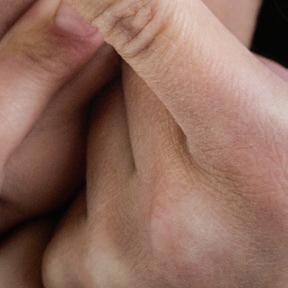
CLI has several possible causes. “Allergies can be a factor,” Dr. Goel said, “or you can have dry eye either due to aqueous deficiency or meibomian gland dysfunction — but I would say the mechanical friction of the lens rubbing the eye is one of the main causes of CLI. Very often, once you take out your contact lenses, a lot of the symptoms go away.”
Those symptoms include not just dryness and irritation, but also persistent feelings of “grittiness,” burning, watering, soreness, and eye fatigue.
While some patients seek out over-the-counter remedies like artificial tears or allergy medications, Dr. Goel notes he has had mixed results with these options. “My experience is that very few of those things will work,” he said.
Ignoring CLI can be dangerous. Eye irritation can lead to inflammation and the introduc-



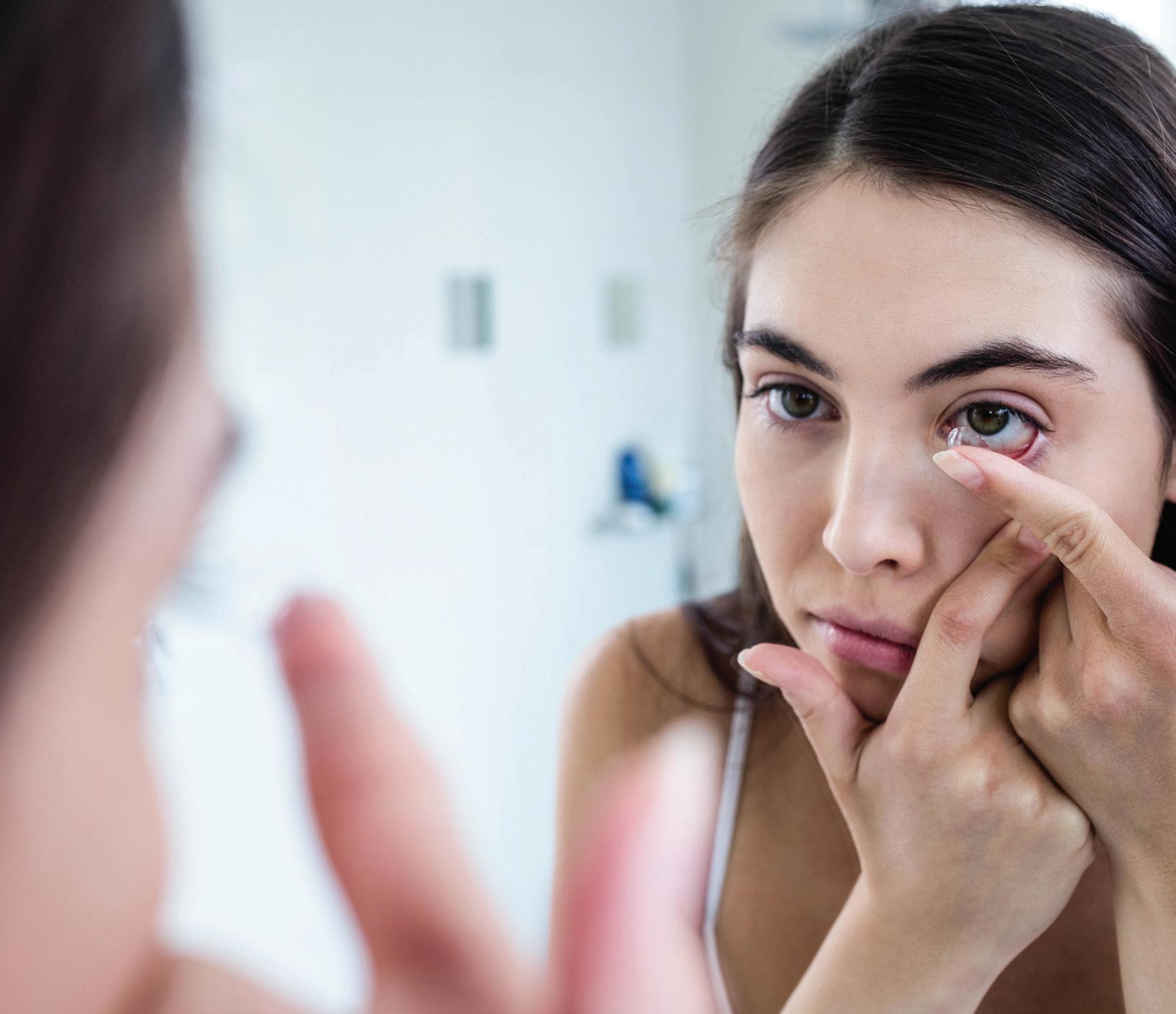
tion of bacteria, breaking down the surface barrier protections of the eye. “That’s when patients start to have infections,” Dr. Goel noted,“and those infections can create scars, which can lead to loss of vision.”
If you’re suffering from CLI, the obvious non-surgical solution is to stop wearing contact lenses and switch to glasses. Dr. Goel also suggests that taking a “vacation” from your contacts from time to time to give your eyes a rest can also help alleviate symptoms.
But for many, persistent CLI eventually leads them to contemplate surgery to correct their


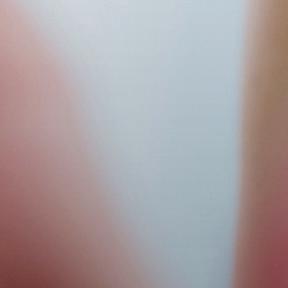


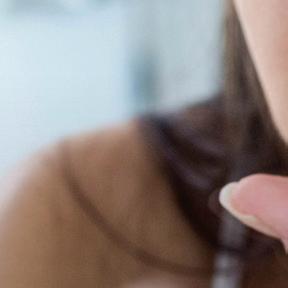
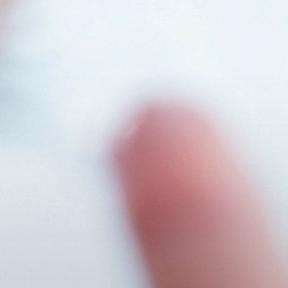
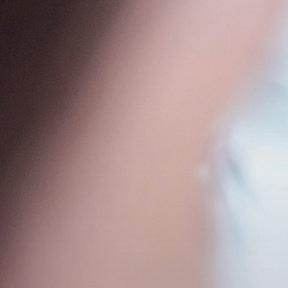
Millions of people struggle with discomfort and vision problems without realizing the true cause.
vision. There are several options, though Dr. Goel doesn’t recommend the one you may have heard of, laser-assisted in situ keratomileusis (LASIK), which can often cause increased dry eye as a side effect.
“Since one of the setups for CLI is having dry eye,” Dr. Goel noted, “we don’t want to make their dry eye situation worse by doing LASIK.”
Dr. Goel believes small incision lenticule extraction (SMILE) laser eye surgery is one of the best solutions for CLI. “SMILE uses a small incision, so you don’t have a large corneal flap like you have with LASIK; you’re cutting less of the corneal nerves and leaving more
of the cornea intact, and in my practice, I’m seeing less dry eye issues as a result.”

But some patients don’t qualify for SMILE, so Dr. Goel may also recommend another surgical option: The EVO Implantable Collamer Lens (ICL). “With the EVO ICL, we put a lens implant inside the eye,” he explained. “Now, that’s a great technology because you’re not doing any corneal surgery. You’re just going through the cornea to get the lens in the eye.”
EVO ICL is more invasive, however, with a higher risk profile. And it’s more expensive, costing about twice as much as SMILE surgery.
Dr. Goel believes patients
need more education about CLI from their doctors. “The biggest issue I find is that patients don’t know what normal is,” he noted.“Their doctors need to set expectations about what is normal, what patients need to see as abnormal, so they can raise their hand and say, ‘Hey, this is not working for me.’” n
For more information about contact lens intolerance, go to zeiss.com/vision-care
Light frequencies from screens can damage your eyes, but nature offers us a way to maintain their health.
The blue light emitted by device screens can be very harmful to our eyes — even though we might not always notice the damage.
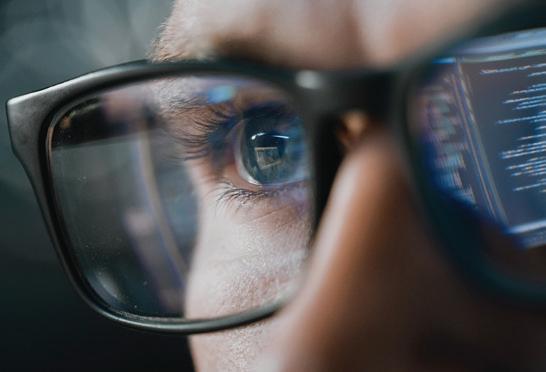
“Blue light is healthy for us in its natural form,” said Kylen Ribeiro, CEO and co-founder of Lightbody, a digital wellness supplement company. “But excessive blue light from artificial sources can be too much for the eyes to handle.”
Chronic blue light exposure can lead to potential damage to the retina or cornea, accelerated eye aging, lack of eye moisture, and eye strain or glare.
Lightbody developed Total Eye Health + Blue Light Defense to provide nutrients to maintain retinal and macular health while filtering blue light and other high-energy light. “Our formulation is targeted toward specific symptoms,” Ribeiro noted. “The trademarked ingredients we use are the best we could find.”

Those ingredients include MaquiBright®, which has been shown to relieve occasional eye dryness and eye strain, and FloraGLO® Lutein & Zeaxanthin, powerful natural antioxidants that filter blue light. Lightbody’s supplements are also sugar-free, GMO-free, and gluten-free.
For more information about blue light and your eye health, visit lightbodylabs.com

The amount of time individuals are spending on screens is increasing, and so is the risk of long-term eye health implications.
As a doctor of optometry, I have seen firsthand the impact prolonged screen time can have on my patients’ eye health. With gaming and social media scrolling on the rise, so is the risk of longterm eye health implications — particularly for children whose visual systems are still developing.
Children are spending more time than ever using screens. A survey conducted by the American Optometric Association (AOA) last year found that 55% of parents say their children spend at least three hours each day consuming digital media — a 10% increase from 2018.
Digital eye strain, also referred to as computer vision syndrome, describes a group of eye- and vision-related problems that result from prolonged use of digital devices, such as computers,
tablets, e-readers, and cell phones. Excessive screen time requires the eyes to work harder, and this “heavy lifting” can lead to headaches, double vision, and poor sleeping. In addition, blink rate tends to decrease heavily when we spend time staring at screens, which can result in issues like dry eyes and blurred vision.
It’s important for parents to be aware of how much time their kids spend on their screens and be on the lookout for any warning signs of potential eye issues, including constant eye rubbing, excessive tearing, light sensitivity, or wandering eyes. Practicing healthier screen time habits and setting appropriate time limits are essential to optimal long-term eye health.
Here are a few steps to help prevent digital eye strain:
• Schedule annual in-person comprehensive eye exams for your family.
• Follow the 20-20-20 rule: Every 20 minutes, take a 20-second
break to view something 20 feet away.
• Minimize glare on the computer screen by repositioning the screen or adjusting your brightness to match your environment.
• Maintain a comfortable viewing distance from screens by being at least 13 to 20 inches away from a smartphone, small tablet, or laptop, and more than 20 inches away from a full-size laptop or computer monitor.
If your child is spending several hours a day looking at digital screens and/or experiencing symptoms, it’s important to speak with a doctor of optometry to keep your children’s eyes healthy.
For more information, book an appointment with an AOA doctor of optometry near you at AOA.org. n
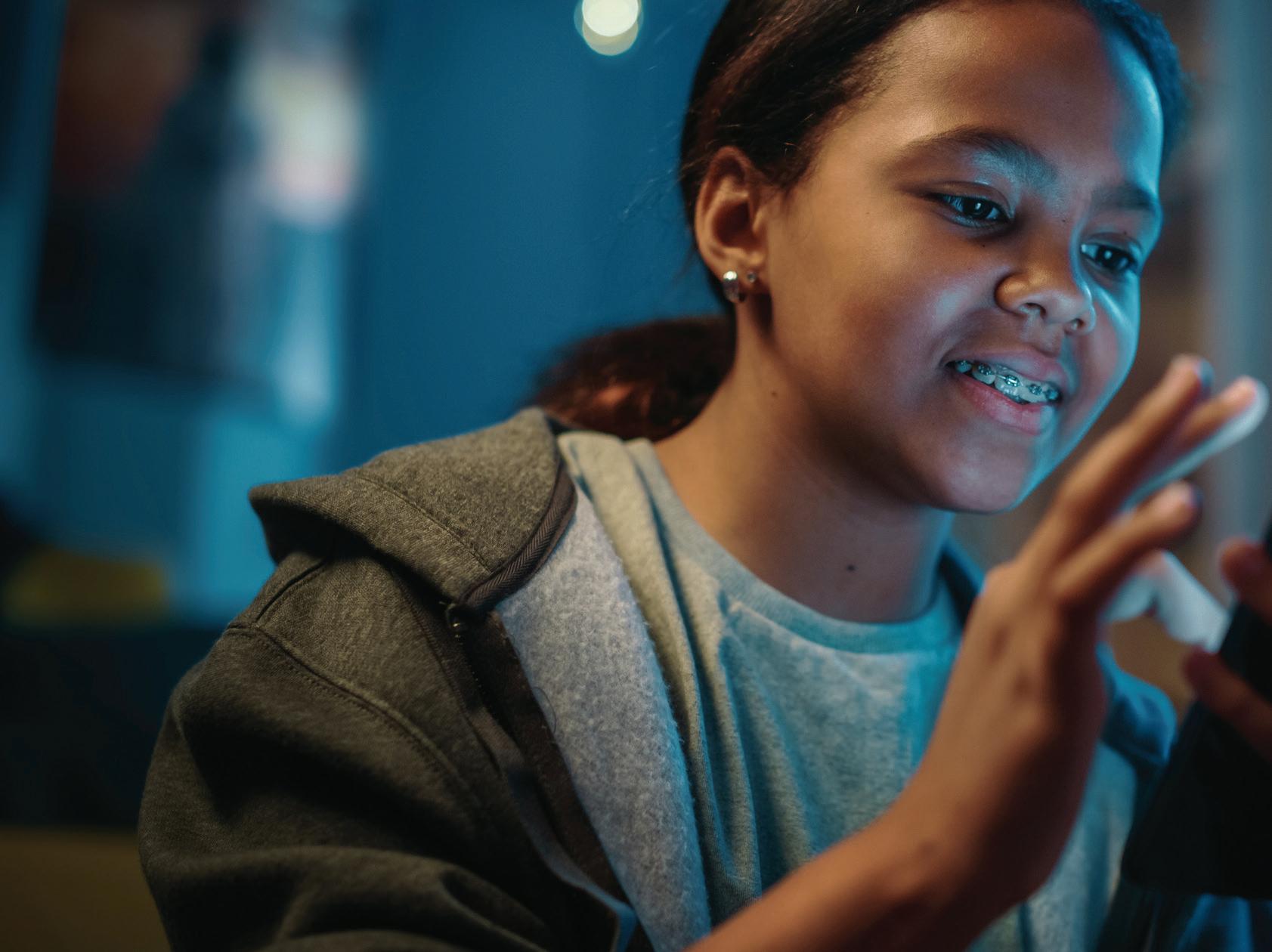




An NIH-funded program offers a yearlong, paid internship focused on diversifying the future workforce at the intersection of healthcare and AI.
Exposing the next generation of professionals in healthcare settings to the intersection of artificial intelligence (AI) and the biomedical sciences is crucial to diversifying that workforce.
To promote that diversity, the University of California San Diego (USCD) Viterbi Family Department of Ophthalmology and Shiley Eye Institute have announced the AI Ready and Equitable Atlas for Diabetes Insights (AI-READI) Yearlong Research Internship Program. This NIH-funded paid internship program will run from July 2023 to June 2024 and is designed to expose pre- and post-doctorate candidates to AI and data science applications.
Anyone aspiring to a career as a healthcare provider or working on the tech side of the healthcare setting will benefit from understanding how AI tools can and will be applied. Key aspects of the program include direct mentorship, a two-week, in-person bootcamp at USCD, research projects presented at a year-end symposium, and strong professional development (a vital aspect of all USCD research internship programs).
Anyone with an undergraduate degree can apply. UCSD has a firm commitment to diversity and encourages applications from candidates from underrepresented groups.
For more information about the program or to apply, visit shileyeye.ucsd.edu/research/ai_read
U.K. makeup artist and YouTube personality Lucy Edwards refuses to let her disability keep her from living her best life.

When she was only 17, Lucy Edwards’ world went dark, but her story was just beginning. Diagnosed as a child with the rare genetic condition incontinentia pigmenti, Edwards lost sight in her right eye at age 11 and became totally blind six years later. Devastated and confused, the British beauty faced an uncertain future, but ultimately realized she had an opportunity to make a difference by sharing her journey.
Dealing with eventual blindness wasn’t easy for Edwards. Realizing what lay ahead, Edwards did as much research on the topic as possible.
“All of the questions that I’m now answering I used to Google, because I knew nothing about disability until I became a disabled woman myself,” she said. “So,
at age 16, when I was losing my remaining eye, I was searching ‘what is blindness?’ and ‘what do I do?’ because no one would tell me.”
When Edwards first decided to upload her experiences on YouTube, she realized she was on to something. She became a hit on social media and continues to gain new followers.
“With TikTok, it was such a crazy new platform,” Edwards said. “I remember sitting down with my fiancé. I was like, ‘Olly, this is insane. People are really inspired by my story.’
“I think it was the journey that resonated with people. No matter what they’re going through, no matter what they’re doing, I was doing something that seemed impossible to me as a sighted girl. I was doing my makeup better as a blind person than I could ever do as a sighted girl.”
Through her blogging, motiva-
tional talks, broadcast appearances, and modeling, Edwards, now 26, has shaken up the beauty industry, even serving as an ambassador for Pantene shampoo. Whether she’s sharing tips on how to apply mascara or offering advice on how to effectively blend foundation, Edwards is touching lives.
“We’re starting to see a shift,” she said. “I think the pandemic really brought it home for people that only one thing has to happen, and it can limit us. When I was a young girl, I grew up so quickly, and I learned to live in a completely different way. We have to look beyond our limitations and think of different ways we can do things. I don’t have to think of myself as broken, and I think that’s what people are starting to understand.”
Edwards has faced her share of challenges since going blind, including being stranded with her guide dog on a passenger assistance train. Her advice for those who are struggling: it’s OK to cry and let it all out.
“Take everything day by day. You are going to feel so crummy, like your world has completely broken apart in two, because you don’t recognize who you are anymore,” Edwards said. “I think for a long time I didn’t like blind Lucy, because I was comparing myself to sighted Lucy, and I would beat up blind Lucy for so many things that weren’t my fault.”
Currently planning her wedding, Edwards doesn’t let anyone bring her down. She believes that when expectations are low, it’s more important than ever to stand tall.
“It’s about busting through those myths and misconceptions,” Edwards said, “and saying, ‘Hey, I’m here, and I am not what you think. And this is cool.’” n
Cindy RileyErica Scaglione was diagnosed with type 1 diabetes when she was 7 years old. At 26, she woke up with no vision.
“I went to bed at night and woke up the next morning completely blind,” Erica said.
Just shy of her 27th birthday, Erica was diagnosed with diabetes-related retinopathy. While several surgeries corrected the damage to her left eye, she never regained vision in her right eye — a complication of diabetes she never expected. And she’s not alone.
Diabetes is the leading cause of new cases of blindness in American adults. Anyone with diabetes is at risk for developing diabetes-related eye disease, just like Erica. Diabetes-related retinopathy, the most common cause of vision loss for people with diabetes, is caused by damage to blood vessels in the back of the eye near the retina. In early stages, there may not be obvious signs or symptoms, and it can sometimes go unnoticed until it’s too late.
The American Diabetes Association® (ADA), with Visionary Partners, VSP Vision™, and Regeneron, created Focus on Diabetes® (FOD), an initiative that seeks to raise awareness about the connection between diabetes and eye health and encourage people
living with diabetes to take steps to improve their health.
During American Diabetes Month in November, the ADA and FOD highlighted this year’s theme: today’s diabetes hits different. With advancements in technology, education, research, and advocacy, those living with diabetes can manage their diagnosis better than ever before. By sharing the stories like Erica’s, we are bringing to light the impact of diabetes and diabetes-related eye disease. Available resources and information are crucial for anyone living with diabetes to help improve their overall health.
“I’ve seen firsthand how the narrative around diabetes has evolved, especially as we have increased our understanding of diabetes care and complications,” said Dr. Laura Hieronymus, certified diabetes care and education specialist and vice president of Health Care Programs, Science and Health Care at the ADA. “It’s critical that we continue to have deeper conversations around the impact of diabetes, so we can continue to deliver the best care and education to people living with diabetes.”
During an annual dilated eye exam, an eye doctor can detect potential health problems early and help protect your vision. Early detection, timely treatment, and appropriate follow-up care can
reduce a person’s risk for severe vision loss from diabetes-related eye disease by 95%.
“Diabetes is a multi-faceted condition, and it’s not always easy for patients to access and implement necessary care,” said Dr. Nuha El Sayed, endocrinologist and vice president, Health Care Improvement, Science and Health Care at the ADA. “That’s why education, along with the real-life experiences of patients like Erica, are so important. They show that while diabetes impacts people differently, there are tangible steps that you can take to live a healthier life.”
For Erica, diabetes hit her life in a big way. Now, she’s dedicated to raising awareness about eye health so that no one endures what she did.
“It’s been challenging learning to navigate my new normal, but my family, friends, and love of opera music have gotten me through and helped me better manage my diabetes and eye health. I hope my story will help others find their strength and remember that diabetes does not define you!” Erica said.
To learn more about American Diabetes Month, visit diabetes. org/hitsdifferent. To learn more about diabetes and eye health, visit diabetes.org/eyehealth. n
A novel approach to pancreatic islet transplant in the eye is being evaluated at the Diabetes Research Institute to treat type 1 diabetes (T1D).
T1D is a disease that results from the attack by one’s own immune system against the insulin-producing cells in the pancreas. The continued autoimmune attack leads to insulin insufficiency and increased blood sugar levels.
Therefore, T1D patients must replace the missing insulin by injecting insulin made from external sources. Insulin injections, though lifesaving, are extremely inconvenient and fraught with dosing errors that often lead to poorly controlled blood sugar levels.
Another form of insulin replacement is through the transplantation of either the whole pancreas or the isolated clusters where the insulin-producing cells reside, known as pancreatic islets. Either transplant type provides insulin from within without the need for external insulin injections. Having an internal source of insulin is significantly superior to insulin injections, but clinical experience has shown limitations associated with the liver as a transplant site.
Researchers at the Diabetes Research Institute (DRI) believe they have a solution. The eye is one of the few “immune privileged” sites in the body, meaning that it does not reject transplantations. Therefore, Dr. Midhat Abdulreda and his team are investigating a first-of-its-kind approach to transplant pancreatic islets in the eye — an intraocular islet transplant.
In the pilot human clinical trial approved by the U.S. Food and Drug Administration, researchers hope to establish the eye as a new site for islet transplant to treat T1D, avoiding rejection without the need for continuous immune suppression. The study is active and recruiting patients.
For inclusion criteria, see study NCT02846571 at clinicaltrials.gov. Also visit www.diabetesresearch.org to learn more about the trial and to download the islet transplant application form.

Since 2009, Casey Harris has been performing as one-third of the pop-rock band X Ambassadors, which released its most recent album, “The Beautiful Liar,” in 2021.
As a person who has been in the music industry for over a decade, and as a person who has been legally blind since birth, Harris is uniquely qualified to discuss the joys — and the chal-
lenges — of working as a recording artist with a disability.
X Ambassadors was founded in Ithaca, New York, as a family affair. Harris’ brother, Sam Harris, is lead vocalist, while Adam Levin plays drums. Casey plays keyboard.
Harris recalled how he and his brother first teamed up, back in high school. “We didn’t
want to have anything to do with each other in high school, of course, because we’re brothers, but he had a band, and I was playing in all sorts of different bands. When [Sam’s] band would be on break between rehearsing their songs, I would come down and jam with the other guys in his band, which he hated, but it would sound really good. Eventually, he begrudgingly said, ‘Hey, do
you want to join my band?’”
Harris added that he agreed to the offer, which would begin a yearslong partnership that led the brothers around the world as X Ambassadors.
Despite his disability, Harris has never felt “taken advantage of or disregarded,” he said. He credits this, in large part, to the fact that he and his fellow bandmates have always had each other’s backs and treated each other like family.
“I think that I was, in retrospect, so lucky,” Harris said. “I was blessed to have these amazingly good-hearted people around me.”
That doesn’t mean musicians who are legally blind are on an even playing field with musicians who can see. Recording software isn’t always easily accessible for people who are visually impaired because it
tends to lack integration with screen readers.
“I really do not think it would take much effort on the part of the software developers to add that integration or maybe the ability to change the font size,” Harris said.
Harris has found workarounds with screen magnifiers and hacks on YouTube. Finding those workarounds in order to self-produce — and maintaining the willpower to keep at the craft of making music and performing — is some advice Harris gives other hopeful professional musicians.
“YouTube is really your friend as a blind musician, or as a blind person in general learning how to do things in the world,” he explained. “Luckily, there’s tons of other blind people out there in the world who post about their experiences and how they do things.” n
Melinda CarterForty-four years ago, an improbable brew of World Health Organization doctors who eradicated smallpox, Baba Ram Dass, Wavy Gravy of Woodstock fame, and other scientists, musicians, and artists convened in a cabin in Hartland, Michigan. Their mission: to make the world a better place.
Shortly after that Michigan meeting, the newly formed Seva (Sanskrit for “selfless service”) Foundation embarked on an audacious goal: to survey the entire country of Nepal and study how blindness affected
the population. The resulting Nepal Blindness Survey, the first-of-its-kind survey in the country, was published in 1983. The scientific findings inform the work of eye care professionals even today.
Ninety percent of people with vision impairment live in developing countries where loss of sight can tip a family into poverty. Importantly, more females than males have vision loss. Half of blindness is caused by cataracts that can be fixed with a simple, 15-minute surgery that Seva’s network of partners can deliver for just $50.
To date, Seva has provided eye care services to more than 50 million people, 3.5 million people in the last year alone. The work spans more than 20 countries. Achieving those kinds of numbers requires an extensive toolkit.
“Together with our partners, we listen, take calculated risks, stretch our thinking, and use learning to strengthen good work and make it better,” said executive director Kate Moynihan. “We scale what works, test what might work, and always put the people we serve at the center of our thinking.”
Today, a talented team leads the work forward. The key to ending avoidable blindness is sustainability. Seva co-creates programs with local communities to ensure they can keep lifting themselves out of poverty after Seva’s intervention has ended. Seva establishes vision centers around the world, trains and employs people from the local communities, provides comprehensive eye care for children, and invests in innovative technology.
“Guatemala Brillando,” or “Brighter Guatemala,” developed in collaboration with
longtime partner eye hospital Visualiza, is the first-of-itskind plan to systematically eliminate avoidable blindness in the country. Seva is positioned to achieve it in just 10 years, and the blueprint will be scaled across the world.
You can be part of the solution when you support Seva. n Seva Foundation
Visit www.seva.org and join the list of people using their power to lift up the world.
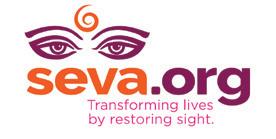
According to the 2018 National Health Interview Survey, approximately 32.2 million adults in America reported experiencing vision loss.
The Centers for Disease Control and Prevention has declared vision loss a major health problem, with the leading causes of blindness and low vision in the United States being primarily age-related eye diseases such as macular degeneration, cataract, diabetic retinopathy, and glaucoma. The reality is that low vision can make even the simplest tasks difficult or impossible to perform. This is where vision rehabilitation comes in.
Vision rehabilitation, as defi ned by the American Optometric Association, is a process of care for individuals with vision impairment(s) managed by doctors of optometry as part of the eye and vision care continuum.
Eye care professionals are encouraged to not wait to refer their patients to vision rehabilitation services. These services can help as soon as an
eye condition is diagnosed.
The vision rehabilitation team helps individuals increase their safety, quality of life, and independence after vision loss through services that:
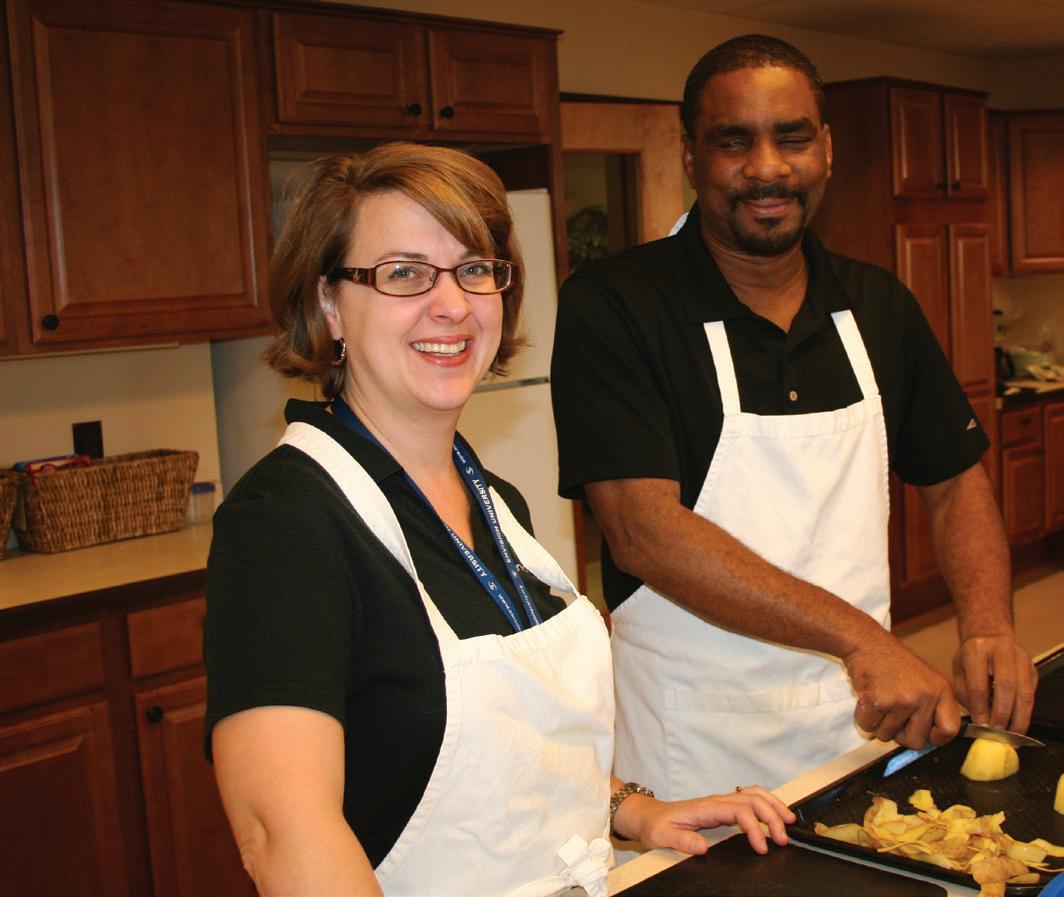
• Identify ways to make the most of their remaining vision with magnification, contrast enhancement, glare control, and enhanced lighting.
• Discover new methods for cooking and managing household tasks.
• Train on assistive technology to utilize computers and access print information.
• Organize information, including specialized note-taking and smart devices.
• Connect with others through support groups after vision loss.
The vision rehabilitation team does not focus on diagnosing or treating eye disease, but rather on helping a person find ways to continue functioning despite vision loss. The overall goal of the vision rehabilitation team is to help people with vision loss find new ways of doing the things they have always done and live the life they have always envisioned for themselves.
To achieve the best outcomes, individuals experiencing vision loss should ask their eye care professional about vision rehabilitation services in their area. If you live in Wisconsin, contact Vision Forward Association for help at vision-forward.org or (414) 615-0100. n
For those who can’t afford surgery, cataracts take everything from them.
Operation Sight aims to help.
More than 24 million people over the age of 40 have cataracts. Surgery is a safe and effective treatment, but it can cost as much as $6,000 per eye for those without insurance.
Dennis Sherlin was one of many who couldn’t aff ord that. “My sight was so bad that I could not see anything in front of me,” he said. “My world started falling apart. I could not drive or work, I couldn’t play with my kid.”
When a GoFundMe page failed to raise enough money, Sherlin’s sister Robin found Operation Sight.
The gift of sight
Operation Sight is a U.S.-based chari-
table cataract surgery program launched in 2014 by The American Society of Cataract and Refraction Surgery (ASCRS). The program connects under- and uninsured people who cannot aff ord to pay for cataract surgery to a nationwide network of volunteer surgeons.

Looking to the future
“Today, my vision is better than it has ever been,” Dennis noted. “For years, I haven’t been able to see during the holidays. This year, I am excited to watch my loved ones open presents — to see


the excitement and smiles on their faces. Until you are unable to see the simplest things and the things that matter most, you will never understand the beauty in everyday life.”
Operation Sight depends on support from donors, and the annual Gift of Sight fundraising campaign is a chance to change someone’s life. n
To donate, scan the QR code:

After a school field trip, Dr. Nishan Pressley knew she wanted to be a doctor. Today, she’s sharing her knowledge and empowering future Black doctors through social media.
Dr. Nishan Pressley has a growing presence on social media platforms such as Instagram, TikTok, and YouTube, where she shares educational information on optometry. Pressley had always used Instagram for personal use, but when she learned others were turning to the platform to tell their stories, she followed suit.
“I thought I should start putting my story out there a little bit more, because for me as a Black woman, being an optometrist is like being a unicorn,” said Pressley, who added she was the first Black woman in her optometry program during medical school.
“When I realized that I was the only Black woman in my class, I thought I could talk about my experience, and hopefully I can educate and motivate someone to consider joining optometry or becoming an optometrist as well,” Pressley said. “The next thing you know, you’re bridging the gap between social media and eye care, which is awesome.”
“The biggest thing is, we don’t have enough of us in optometry,” Pressley said. “That’s why I truly believe there is a lack of care when it comes to preventable eye diseases, specifically in the Black community.”
For one thing, diseases like diabetes, high blood pressure, and high cholesterol — all health conditions that are more prevalent among the Black population — also affect the eyes. “It’s more than just, ‘Oh, you need glasses,’” Pressley explained.
For aspiring optometrists, Pressley advises, “remember your ‘why.’”
“If you know that you want to be an optometrist, know it’s not going to be easy. The biggest thing I recommend is to remember your ‘why’ because that’s going to get you through those days where maybe you fail a test or your clinical skills practical. Remember why you’re there.”
Health disparities exist across all fields of medicine; ophthalmology and vision health are no exception.
Studies show Black, Hispanic, Asian, and Native American people are at greater risk of vision loss and blindness compared with White Americans. Glaucoma, diabetic retinopathy, and cataracts are among the eye diseases and conditions that disproportionately affect these populations.
Ignoring these disparities in eye health means that millions of Americans will not receive all the benefits of modern eye care. Confronting these disparities is complex and requires an allhands-on-deck approach.
One strategy ophthalmologists are pursuing is to increase the diversity of the healthcare workforce. Studies show that patients feel more welcome if there is someone in the office whom they can relate to or who has some shared life experience. The problem is that the healthcare system is fundamentally flawed not only in how it delivers care, but also in how it recruits, trains, and motivates physicians.
That’s why the American Academy of Ophthalmology has teamed up with the Association of University Professors of Ophthalmology to create the Minority
Ophthalmology Mentoring program. The program seeks to increase diversity in ophthalmology by helping underrepresented medicine students become competitive ophthalmology residency applicants. Students receive one-on-one mentorship, medical career planning guidance, networking opportunities, and access to educational resources.
The program has actively supported 206 students since it launched in 2018. Nine out of 12 program students that participated in the 2021-22 ophthalmology match cycle were successfully accepted into an ophthalmology residency program. This 75% match rate is above the 70% success rate reported for all U.S. participants. A recent study credited this program with helping to increase the number of under-represented minorities matching into ophthalmology from 4.9% to 10.8% in just three years.
The success of the program is best seen not in the statistics but in the details of individual people. Take Dr. Clara Castillejo Becerra, for example. Dr. Becerra was admitted to the prestigious Mayo Clinic College of Medicine and Science, where she’s currently in her third year of residency.
Becerra came to the United States from Peru with her fam-
ily when she was just 12 years old. She excelled in school and went on to Mercer University in Georgia. While she continued to ace her studies, she struggled to fit in with the mostly white student body. She didn’t linger and graduated in just 2.5 years. For medical school, she sought out a more diverse and welcoming community, and she found it at Ohio State University College of Medicine.
When it came time to decide what kind of doctor she would become after graduating medical school, she again sought out programs that value diversity. That’s how she heard about the ophthalmology mentoring program.
“Treating someone of similar background is always a happy experience,” Dr. Becerra said. “They ask, ‘Are you really my doctor?’ They light up; they want to know about me and my background. Building that relationship, that trust, is critical to their care. I’ve been lucky to experience it.”
Bringing social justice to the healthcare system won’t happen with a single program, but this single program is already making a difference. n
Tamara R Fountain, M.D., Professor, Rush University Medical Center; Former President, American Academy of OphthalmologyMore than half of all Americans will have cataracts by age 80. Cataracts occur when the proteins in the lens of your eye start to break down, eventually making it cloudy. Treatment typically means surgery, in which the clouded lens is removed from your eye and replaced with a clear artificial intraocular lens (IOL).
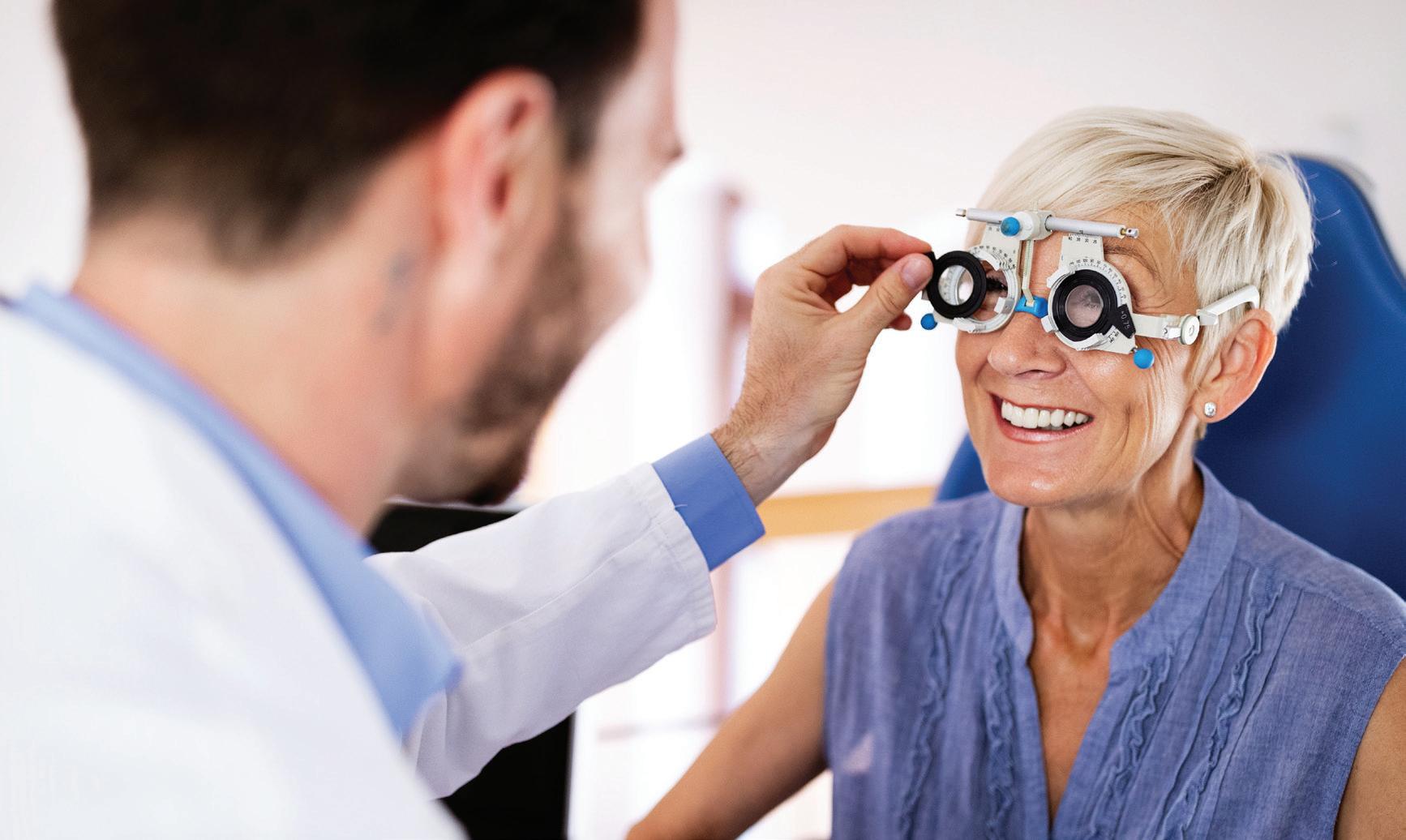
Cataract surgery is effective — about 90% of patients report improved vision post-surgery — and quite safe. “Cataract surgery is scary, because you’re having your eye operated on,” said Dan Durrie, M.D., a renowned eye surgeon and consultant to RxSight, a leading manufacturer of intraocular technology. “But it’s really straightforward; it doesn’t take very long and it’s a pretty smooth experience.”
There is one challenge with the IOLs traditionally used in cataract surgery: Many people report their vision isn’t as good as they’d hoped — and if a fixed lens is used, there is no way to adjust the prescription. Luckily, there is another option.
The Light Adjustable LensTM (LAL®) by RxSight® allows you to “test drive” your post-cataract surgery vision.
“What’s unique about the Light Adjustable Lens is that the adjustment is done post-op,” Dr. Durrie noted. “A month after surgery, the patient has the chance to say, ‘Gee, this is good, but maybe my vision needs to be a little better,’ and then you have a chance to adjust it. You can do up to three adjustments, and when the patient is satisfied with their vision, you lock it in. Once locked in, it’s like any other IOL.”
These adjustments are done by your eye doctor in their office and use ultraviolet (UV) light, which the lens reacts to. The adjustments are painless and take only a few minutes, but the patient does need to take precautions until they lock in their prescription.
“You need to wear UV-protective glasses to protect the lens,” Dr. Durrie explained. “It’s adjusted with UV light,
Traditional intraocular lenses used in cataract surgery had permanent prescriptions. But adjustable lenses offer a better experience.
so you want to make sure stray ultraviolet light doesn’t affect it.”
Dr. Durrie notes that patients experiencing severe dry eye may not be suitable for the LAL, because the condition can affect the treatment.
The Light Adjustable Lens is a game changer for anyone dealing with cataracts — or anyone concerned for their overall eye health. The ability to adjust the prescription of the lenses up to three times dramatically increases the effectiveness of surgery in improving the vision of those suffering from cataracts.
In one study involving 600 participants, for example, cataract sufferers
who received the LAL with the necessary adjustments were twice as likely to have achieved 20/20 distance vision without glasses.
For Dr. Durrie, his experience as both an eye surgeon and a patient has convinced him of the value of the Light Adjustable Lens. “My vision was better that day,” he noted. “I was kind of surprised at how much difference it made. I’ve been kind of driving people crazy. Reading restaurant signs for people — showing off a little!”
He also believes this is just the beginning. “This field will continue to develop and will be categorized on this idea of adjustments after surgery being the norm,” he said. “The products now
are working great and I’m sure they will be even better in the future.”
The U.S. Food and Drug Administration has approved the RxSight technology for patients with pre-existing astigmatism of greater than or equal to .75 diopters undergoing cataract surgery. Ask your doctor to discuss the risks and benefits of the Light Adjustable Lens and if it’s the right lens for you. n
 Jeff Somers
Jeff Somers
For full indication and important safety information, visit www.rxsight.com
Read more about vision care at futureofpersonalhealth.com

